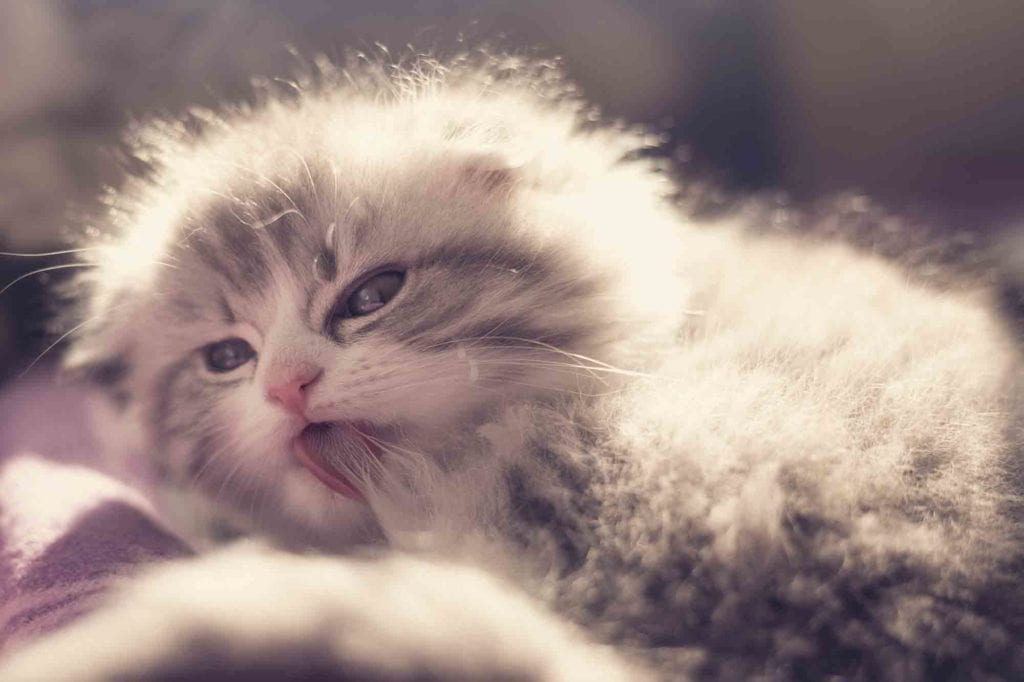 There are “holidays” for almost everything these days. From “International Talk Like a Pirate Day” (September 19) to “Eat Ice Cream for Breakfast Day” (February 3), there’s an endless variety of things to celebrate.
There are “holidays” for almost everything these days. From “International Talk Like a Pirate Day” (September 19) to “Eat Ice Cream for Breakfast Day” (February 3), there’s an endless variety of things to celebrate.
The last Friday in April is just one of those days: National Hairball Awareness Day. You’d think with a country-wide drive to raise awareness about this issue, hairballs must be pretty normal, right? Without a doubt, hairballs come with the territory of owning a furry feline, but they can also signal something more serious.
What We’re Really Talking About
Hairballs (the result of ingesting hair during self-grooming) have quite the place in history. In fact, the Persian-derived word bezoar (mass of nondigestible matter) translates to “protect from poison.” Bezoars from sheep, goats, deer, cows, antelopes, oxen, and llamas were used during the middle ages as remedies for poisoning, symptoms of the plague, and even epilepsy. Due to their perceived value, some bezoars were even cast in gold!
While you might not want to collect your cat’s bezoars, at least you know your cat isn’t the only one to experience hairballs.
The Mechanics of Hairballs
Cats are expert groomers. When they’re not sleeping, eating, playing, or stalking, they’re typically tidying themselves up. During the process, the barbs on their tongues pick up loose or seperated hairs. With nowhere to go but down, cats swallow the hair, where it builds up in the stomach.
Many cats are able to pass hair. In fact, you may occasionally notice it in the litter box wrapped into fecal matter. Just as likely, however, is that the hair forms into a mass that has to be regurgitated.
Doesn’t Look Spherical
When the esophagus pushes up a hairball, the mass elongates into a small log shape instead of a ball. A wheezy cough usually accompanies the retching. Once deposited on your floor, your cat will simply resume their task. Hint: if you have cats of different ages, it’s likely not the youngest one who’s coughing up hairballs.
How Normal are Hairballs?
It depends on how furry your cat is, but even those with longer hair should be able to cope with the results of self-grooming. Please let us know if you notice frequent occurrences; most cats regurgitate an average of 2 hairballs a year. We can help you find the right approach to helping your cat, such as increased grooming (professional or at home), nutritional changes, or supplements.
The timing of hairballs goes hand in hand with the weather. When cats shed their longer winter coats, you’ll likely see a hairball in spring.
Strong Reputation
Perhaps due to their strong association in cartoons, comic books, and movies, hairballs and cats just go together. However, just because you have a cat doesn’t necessarily mean that you’re going to be living with hairballs.
Please let us know if you have additional questions or concerns. Our veterinarians and staff are always here to help!
Recent Posts
About Us
We know that choosing the right veterinarian for your pet (and you) can be a challenge. Yet, with our stress-free handling, our long-term, experienced staff, and a state-of-the-art facility, we make the decision an easy one!
